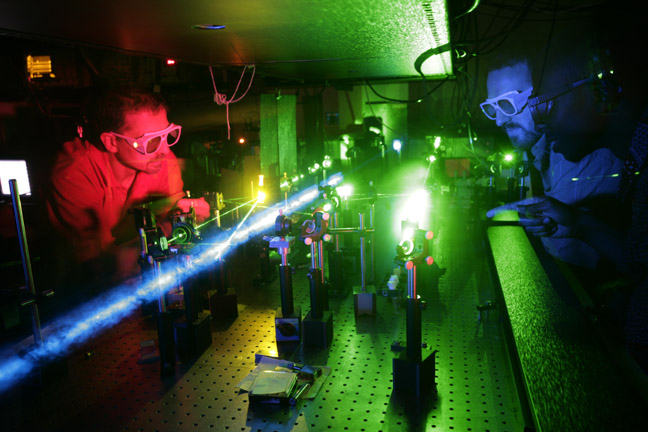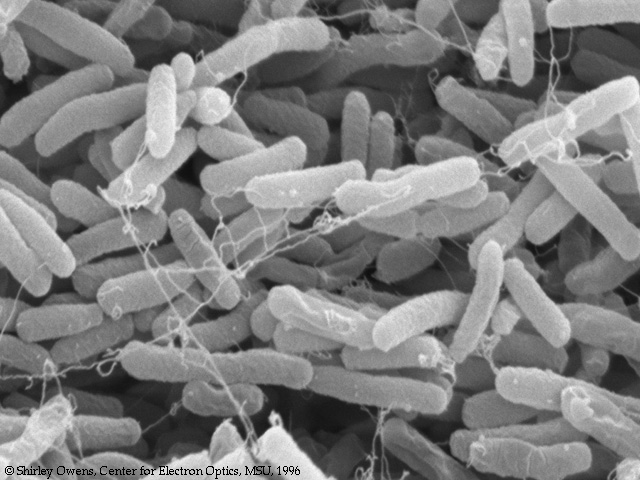Sitting in another meeting room, the guest speaker decides she wants to show some slides. A flurry of scientists whirl about the room pressing buttons haphazardly to make the screen descend from the ceiling, to ensure the projector is actually plugged in and working… Then comes the tricky part, lowering the light levels so that people can still write notes and see each other, but also see the projections on the screen. The light goes off, people titter at this quite expected eventuality, the lights come back on even brighter than before, and after a few more fumbling button pressings, dimmer slidings, and switch flickings, everybody is set. At least until the speaker needs to write on the whiteboard to draw a supplemental diagram.
In the laser lab in the next building over, my colleagues face lighting challenges. Much of the experimenting needs to be done in darkness, but the setting up and adjustment of lenses, beam splitters, laser cavities, vacuum systems, cooling pipes, and the rest requires nice strong light to handle the delicate, fiddly parts. The trouble is that most of the material in the room, including the optical table everything is mounted on, is made of reflective metal. Having good, bright lighting that lets you see everything, and isn’t going to cause strong reflections on most of your surfaces–which make it harder to see fine details—is tricky. You don’t even have the luxury of being able to light from directly above, because of the racks of equipment feeding power cables and electronic signals and sensors down to the optical table. When working in the dark, these physicists have gotten used to looking at certain things from the corners of their eyes, where the cells are more susceptible to dim lights, even though it’s at the expense of color vision. Looking right at something is the best way to make it disappear in a dark room, and even though they’re physicists, that has nothing to do with Schrodinger’s cat—it’s just a function of biology.
On another part of campus, a friend is studying photoautotrophism. In this instance, her photosynthetic bacteria need both the environment of a sterile lab for replicability and a source of light that mimics sunshine. Fortunately, there is a whole range of lightbulbs that give different variants of daylight spectra suitable for the purpose. There is a market for lightbulb with exotic spectra for uses in science labs, but also in spinoff applications for experimental photography.


